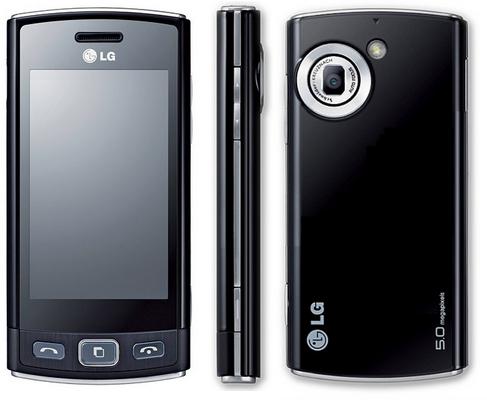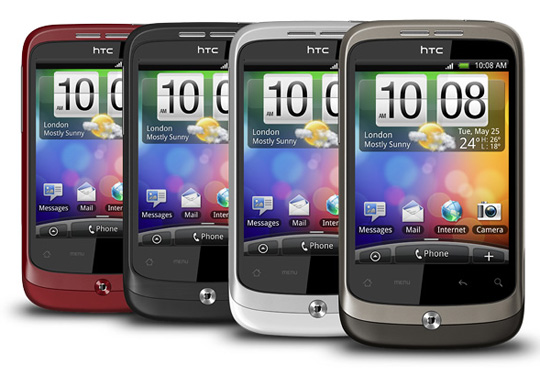The LG Viewty Snap is a pretty old smartphone, it was released in 2010 but it still can put a smile on your face. It has an attractive design and is targeted at the younger audience. Its main attractions are the 3” WQVGA touchscreen and a 5MP Schneider-Kreuznach-certified camera with LED flash, it is also heavy SNS integrated in a world in which you don’t even exist without a Facebook account, unfortunately it lacks 3g but it compensates with its musical abilities. Let’s take a look:
LG Viewty Snap key features
• 3" 256K-color resistive TFT touchscreen of WQVGA resolution (240 x 400 pixels)
• Quad-band GSM/GPRS/EDGE support
• Widget-enhanced interface and Livesquare home screen
• 5 megapixel Schneider-Kreuznach-certified autofocus camera with LED flash
• QVGA video recording @10fps
• micro SD card slot, up to 16GB
• Standard 3.5mm audio jack
• Standard micro USB port (charging enabled)
• Bluetooth 2.0 with A2DP
• Landscape on-screen QWERTY keyboard; Handwriting recognition
• FM radio with RDS
• Office document viewer
• Social networking integration
• Smart dialing (names and numbers)
For full specs, clik here. http://www.mobilephonedeals.com
The LG Snap measures 108 x 53.1 x 12 mm, almost the same as the legendary Cookie, it is a compact smartphone which weighs a mere 87 grams, all these slim dimensions do not compromise the screen size, that’s the good news.
In terms of design, is similar to the LG Chocolate line, the main points of focus are the display and the camera, they pretty much define the style of the phone.
The touchscreen uses lo-tech resistive technology, it is a 3-incher of WQVGA resolution unit, anyway it’s a bright display with good contrast, the viewing angles are decent and overall it offers a lot for the money.
Besides the display, the front of the smartphone features three hardware buttons and the earpiece, on the left side we find the micro USB port used for both charging and data transfers, on the right there’s the dedicated camera key and the volume rocker, the top houses a 3.5 mm audio jack and the power/lock key and the bottom hosts just the microphone.
The back is the most interesting part of the LG Snap, there we can find the 5 megapixels camera with Schneider-Kreuznach lens and LED flash. Removing the back panel reveals a 900 mAh Li-Ion battery which offers almost 2 days of standby under pretty heavy use.
Also there are the SIM card/micro SD slots, the last one being hot swappable. The back of the phone is made of piano black plastic, just like the LG Chocolate, the build quality is good, the phone feels solid and very comfortable to hold in hand. It is also lightweight and sits nicely in any pocket.
The phone runs on LG’s in house software, customized with S-Class eye candy, there are widgets and home screens, including the Livesquare home screen.
The phone offers a clock widget, a FM radio, a music player, some Notes application, it features image slideshow, also an organizer with calendar and a few other items. I almost forgot the Facebook widget, but I’ll cover it later in the review.
The LG Snap also features multi tasking, it offers a Task manager which lets you run a number of Java/native apps in the same time and you can switch between them easily.
The social networking covers Orkut, Facebook, Twitter, Picasa, Flickr and MySpace but only Facebook and Twitter have apps (Facebook has a widget too).
As for telephony, the phone hands calls nicely, it supports smart dialing, the signal reception is good, also the in call sound quality. Messaging is very easy to use and intuitive, the email client is configured automatically.
The music player is very well implemented, you can filter tracks by artist, album etc., the phone comes with equalizer presets and a music recognition service. The video player is nothing to write home about, it can only play small resolution video in 3gp and mp4 format, forget the DivX/XviD.
As for audio output quality, the LG Snap does well for its league.
Web browsing is nice, page rendering is accurate and text is legible even when zooming pages, you can save pages for offline viewing, search on page, toggle full screen and landscape views.
The camera offers a maximum image resolution of 2592x1944 pixels, it offers autofocus and a LED flash, all camera settings can be accessed with a toolbar in the viewfinder, it provides some basic settings like ISO, exposure compensation, macro and so on. The pictures are pretty good, colors are accurate and contrast is ok, detail also is fine, the software processing plays a significant role in this department.
The LG Snap shoots clips in QVGA resolution at 10 frames per second, a pretty poor performance from the Korean company but it compensates with a nice tool called Optic-all zoom, which allows the Snap to do digital zoom (up to 2x) without loss in image quality.
Final word, this is a pretty nice entry level smartphone, young at heart, with a nice design and interface, a good camera, with good native apps and social integration. You can play music and take pictures, upload them on Facebook and share them with friends, for most youngsters, this is as good as it gets, isn’t it?
For a mobile phone deal, please visit our website.
http://www.mobilephonedeals.com










